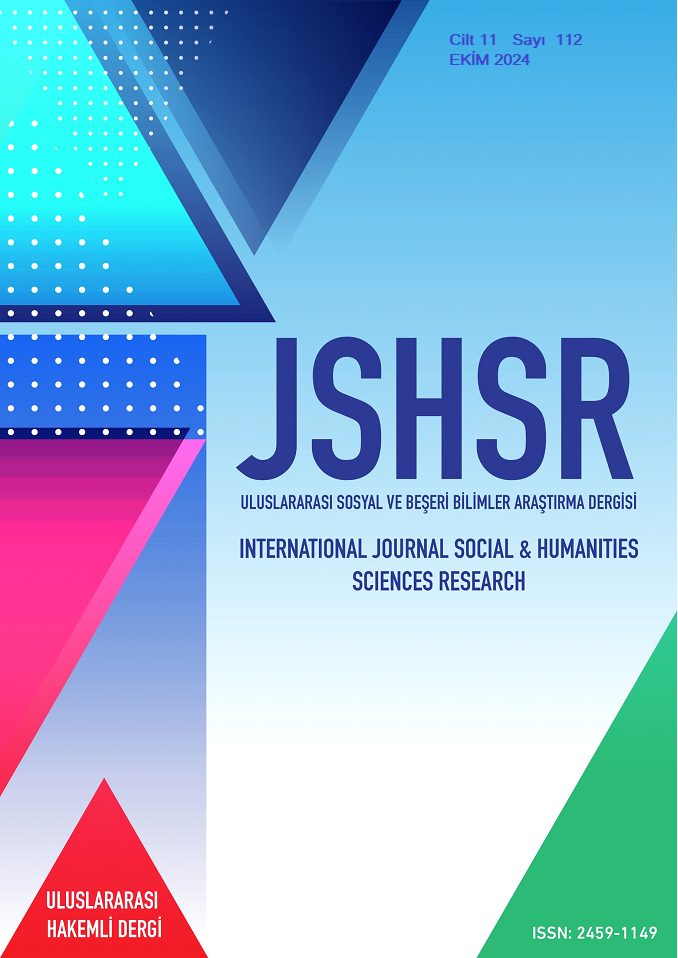Examination of Traditional and Modern Violin Techniques
DOI:
https://doi.org/10.5281/zenodo.14020375Keywords:
Violin, Violin Techniques, Contemporary MusicAbstract
Throughout the development of music over the centuries, violin works have also undergone changes from period to period, from school to school, from composer to composer. Violin playing techniques constitute a part of this change. Violin techniques have shown a significant development line from the Baroque period, when the first major examples of solo violin works were produced, to the music of the 20th century, however in the modern period, these techniques broke out of all their traditional patterns and gained an unprecedented diversity. In this study, which was conducted using the literature review method, traditional violin techniques, the new interpretations of these traditional techniques in contemporary music, as well as extended violin techniques specific to contemporary music have been examined within a historical perspective. While examining and interpreting selected violin techniques, notation examples from selected works are limited to contemporary music, and suggestions are presented to guide composers and performers regarding the techniques.
References
Apel, W. (1944). Harvard dictionary of music. (second edition revides and enlarged), The Belknap Press of Harvard University Press.
Arditti, I., & Platz, R. H. P. (2013). The techniques of violin playing. Music Akademie.
Boyden, D. D. (1950). The violin and its technique in the 18th century. The Musical Quarterly, 36(1), 9-38.
Karcılıoğlu, İ. (2018). Yaylı çalgılarda kullanılan modern icra teknikleri ve grafik notasyonu. Conservatorium, 5(1), 19- 38.
Kimura, M. (1999). How to produce subharmonics on the violin. Journal of New Music Research, 28(2), 178-184.
Knox, G. (2018). Stretching Th String: Embedding Pedagogical Strategies in Extended Techniques Compositions For Strings. [Yayımlanmamış Doktora Tezi]. (88404), Middlesex University, London.
Kiremitci, A. P. (2024). Obua eğitiminde 6 modern çalma tekniği ve çalışma önerileri. D-Sanat (8), 34-48.
Krewer, M. (2018). Extended Techniques for Intermediate Violin Students. [Yayımlanmamış Doktora Tezi], Louisiana State University, Louisiana.
Mansfield, O. (1924). The Story of the Trill, or Shake. The Etude. Theodore Presser Company.
Van der Merwe, B. (2005). New Frontiers in the Art Of Violin Performance: The Contemporary Study And Pedagogy of Extended Performance Techniques For The Violin. UMI.
Nummela, A. (2023). The Contemporary String Instruments How To Master Extended Bowed String Instrument Performance Techniques. [Degree project]. (Course: CA1004), Master of Musical Performance Kungliga Musikhögskola.
Schelleng, J. (1974). The physics of the bowed string, Scientific American Magazine, 230(1), 87-95.
Sevsay, E. (2013). The cambridge guide to orchestration. Cambridge University Press.
Stowell, R. (1990). Violin technique and performance practice in the late eighteenth and early nineteenth centuries. Cambridge University Press.
Stowell, R. (1992). The cambridge companion to the violin edited by professor of music, university of wales college of cardiff. Cambridge: Cambridge University Press.
Stone K. (1980). Music notation in the twentieth century a practical guide by kurt stone. W.W Norton & Company.
Strange, P., & Strange, A. (2001). The Contemporary Violin: Extended Performance Techniques. University of California.
Vincent, M. (2003). The Development Of Contemporary Violin Repertoire. Contemporary Violin Techniques: The Tımbral Revolutıon By Michael Vincent.
Zukofsky, P. (1968). On violin harmonics, perspectives of new music, Journal Article, 6(2), 174-181.
Wei-Yan Kwok, S (2018). Breaking the sound barriers: extended techniques andnew timbres for the developing violist. [Doctor Of Musical Arts]. A Thesis Submıtted In Partial Fulfillment Of the Requirements For The Degree Of The University Of British Columbia.
Downloads
Published
How to Cite
Issue
Section
License
Copyright (c) 2024 INTERNATIONAL JOURNAL OF SOCIAL HUMANITIES SCIENCES RESEARCH

This work is licensed under a Creative Commons Attribution 4.0 International License.


